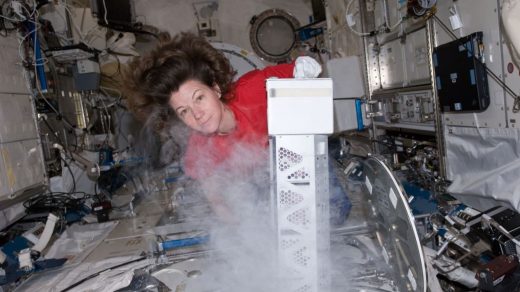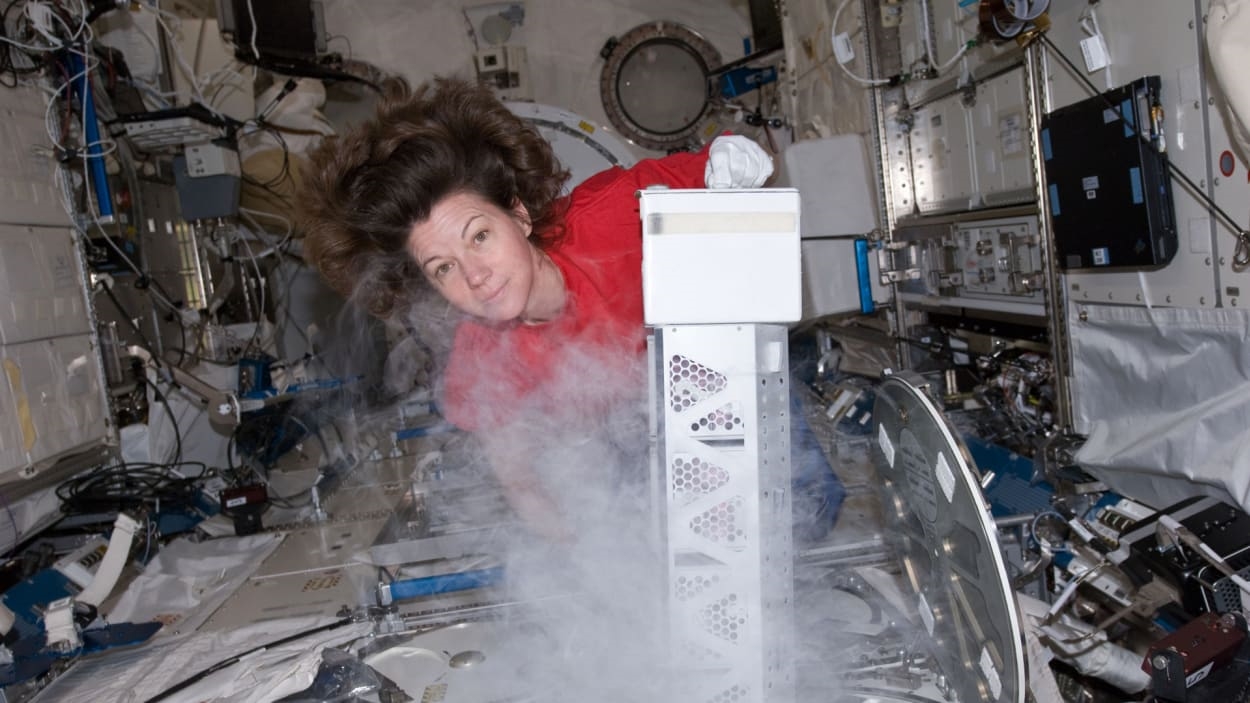How Colgate-Palmolive, NASA, and an astronaut are teaming for better space hygiene
During her time aboard the International Space Station, former astronaut Cady Coleman became the self-appointed Clean Gym Clothes Police. Daily grueling workouts to keep muscles from atrophying in microgravity produced impressively sweaty workout gear, which the (mostly male) crew would reuse long after its expiration date.
“We weren’t supposed to use them longer than a week or two. But despite having a lot of gym clothes onboard, some of the crew were pleased to be conserving supplies—and determined to break the record for longest use of gym clothes. Plus, they hadn’t read the directions,” says Coleman.
This being space, there were far worse crimes against laundry—like throwing away clothes while they were still damp. A supply ship would haul those old rags along with other waste to incinerate during reentry into Earth’s atmosphere. But in the nascent days of space station living, no one realized how much water evaporated from sweaty gymwear.
“We recycle all the water—actually collect the humidity out of the air,” says Coleman. “When one of the crews started stuffing them wet into the bags on the trash ship, it changed the entire water balance of the station. Mission Control told them, ‘Let them dry out and then put them in the laundry bags.’”
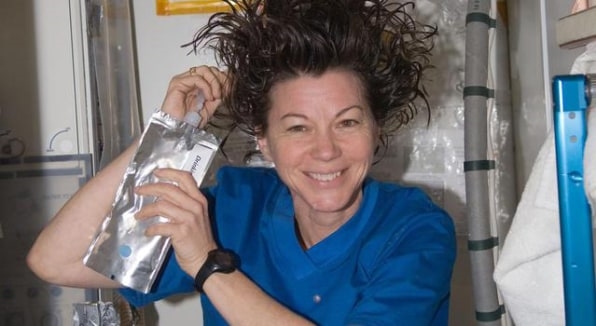
Coleman’s spacefaring anecdotes are great fun in conversation. But for researchers at Colgate-Palmolive tapping her guidance, they translate to hard science. The Manhattan-headquartered consumer products multinational is moving more aggressively into the space sector, with an eye toward developing more advanced and sustainable products and packaging to improve astronaut oral and skin health, and leveraging those innovations for use on Earth.
After successful experiments aboard the ISS over the past two years, the company today announced a formal partnership with NASA through its Space Act Agreement, which connects the agency with external research efforts to solve space flight problems. NASA is not funding Colgate experiments; rather, their arrangement aligns research goals and needs, and streamlines microgravity testing and connections to related experts.
“Disruptive innovation happens when you put yourself in a very highly constrained environment [like space],” says Colgate-Palmolive CTO Stephan Habif. “So instead of thinking, for example, how can you brush your teeth when you have very little water? What if the challenge is there is no water? We think the solutions we would invent there, with some adaptation, could be great solutions for places on Earth where we have high constraints.”
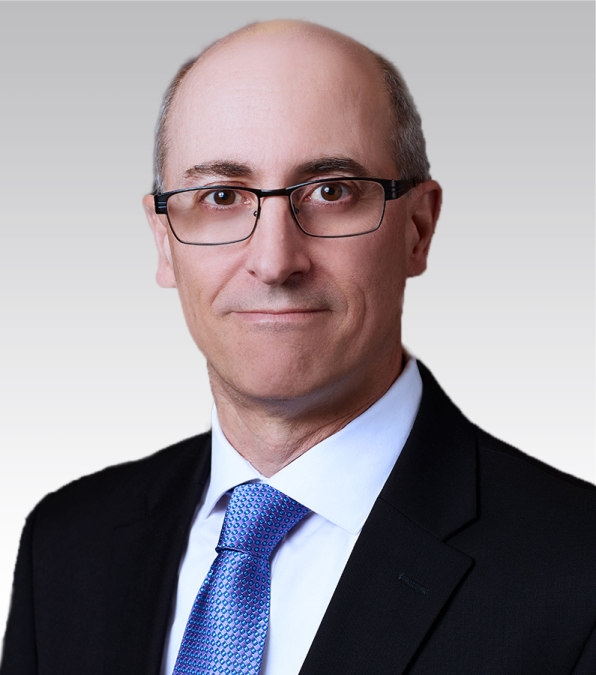
Coleman recently signed on as a strategic advisor to Colgate’s microgravity research for the next year, drawing upon her considerable experience as a polymer chemist who designed and ran experiments aboard the ISS. Coleman spent more than 180 days in orbit on three missions between 1995 and 2011, including a nearly six-month stint on the space station as lead robotics and science officer—not to mention scoring Hollywood points for coaching Sandra Bullock in preparation for Gravity.
“I’m creating a picture of what it’s like to live up there,” says Coleman, who is at work on a book about her NASA experience. “Things just happen differently, especially biologically. The microgravity environment allows us to do experiments that can’t be done down here.”
Among the changes that occur without the pull of gravity: clipping toenails becomes a two-person operation; heat flow changes; you pee too much or not enough; heart muscle and blood volume shrink; vision worsens; dehydration increases; microbes grow differently; skin becomes thinner, drier, and more prone to cuts and chaffing, especially after daily treadmill runs in a harness. And NASA is still studying the long-term effect of increased radiation on astronauts.
It’s these types of biological changes that have informed Colgate’s research approach. Rather than test existing products on astronauts—which clinical protocols make extremely difficult—the scientists are taking more rudimentary steps to explore how oral bacteria and skin transform at the cellular and genetic levels during space flight.
“It’s not as simple as ‘use it at night and then give me your feedback,’” says Dr. Lia Arvanitidou, a VP of global research and development at Colgate-Palmolive. “It’s really pure research; it’s learning. We’re scratching the surface, but you’ve got to start from the fundamentals, build the knowledge, and then take those learnings and build them into innovative solutions.”
The team will continue analyzing the data from its previous space experiments before charting its next steps. A 2021 ISS payload monitored how different types of plaque-forming bacteria grew, metabolized, and interacted with one another in space. Earlier this year, its testing looked for genetic changes in skin tissue samples. The scientists have not yet released their conclusions.
Inspiration for the skin studies came courtesy of another astronaut, Doug Wheelock, when he visited the Colgate Global Technology Center in Piscataway, NJ in 2017 and described how dry, flaky, and thin his skin got in space.
“That’s when the light bulb went off in our heads,” says Arvanitidou. “On Earth, we see skin become thinner as we age. Maybe there is a connection. If it’s happening so much earlier under the microgravity environment, can we test this hypothesis? And can we use the microgravity environment as our accelerated environment to see things much faster than they would take place on Earth?”
It’s hard enough to devise experiments in general. But adapting them to microgravity can be especially daunting when basic chemistry changes. For example, the skin samples would normally sit in a Petri dish of liquid nutrients. But as liquid forms into droplets in space, the Colgate team had to tap outside experts to help design a device that could both contain and feed it to the skin.
“We had a number of things like that,” says Arvanitidou. “I take pride in my scientists and I thinking ahead of what could go wrong, but we just didn’t know to ask these questions. That’s why it’s not easy.”
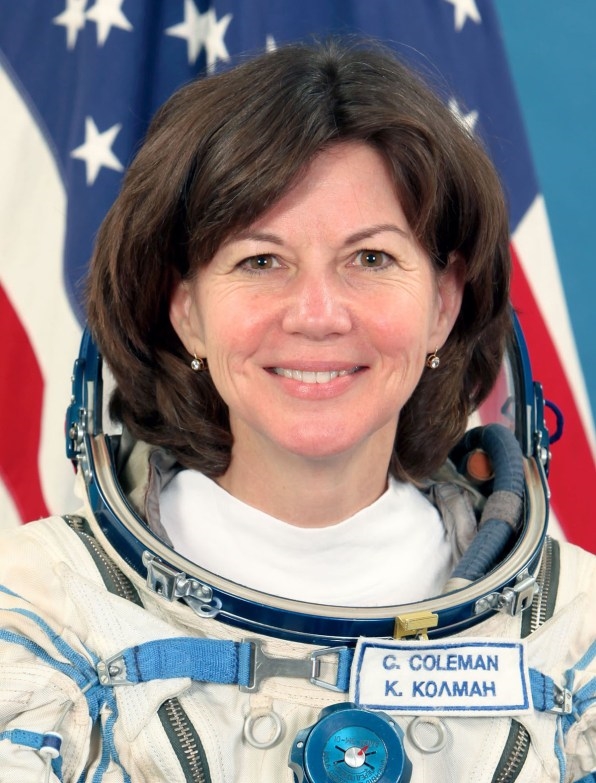
Which is why Coleman’s perspective is so crucial. Her first mission involved figuring out how astronauts would eventually conduct experiments aboard the ISS, then in the process of being built, and which designs worked best for different types of testing.
“Crew time is the most precious thing up there,” she says. “So the best thing you can do is design your experiment to not need anything from an astronaut,” but not make it so automated that an astronaut can’t intervene if something goes wrong. “It’s kind of like kitchen design—are there enough places to put everything but still have enough room to bake your cake?”
All involved believe a similar approach to scientific exploration will fuel their cross-pollination. Both Coleman and Arvanitidou earned Ph.D.s from the same University of Massachusetts, Amherst chemical engineering program. Coleman is also impressed that 58 percent of the company’s scientists are women. “I think that women solve problems in a more integrated way,” she says. “Health has a lot of different aspects which lends itself to being more team-oriented.”
With NASA’s Artemis mission underway, astronaut health in prolonged space environments will be a critical indicator of how rapidly the space agency can move forward with its goals of creating a lunar base and orbiting station in preparation for an eventual Martian excursion. Pursuing that could help facilitate those dreams and bring those solutions closer to home, especially for populations living in more extreme conditions.
“Very often when we talk about space, we talk a lot about technology and forget the human factor,” says Habif. “For us, it’s a great human adventure before a technological adventure.”
(7)

